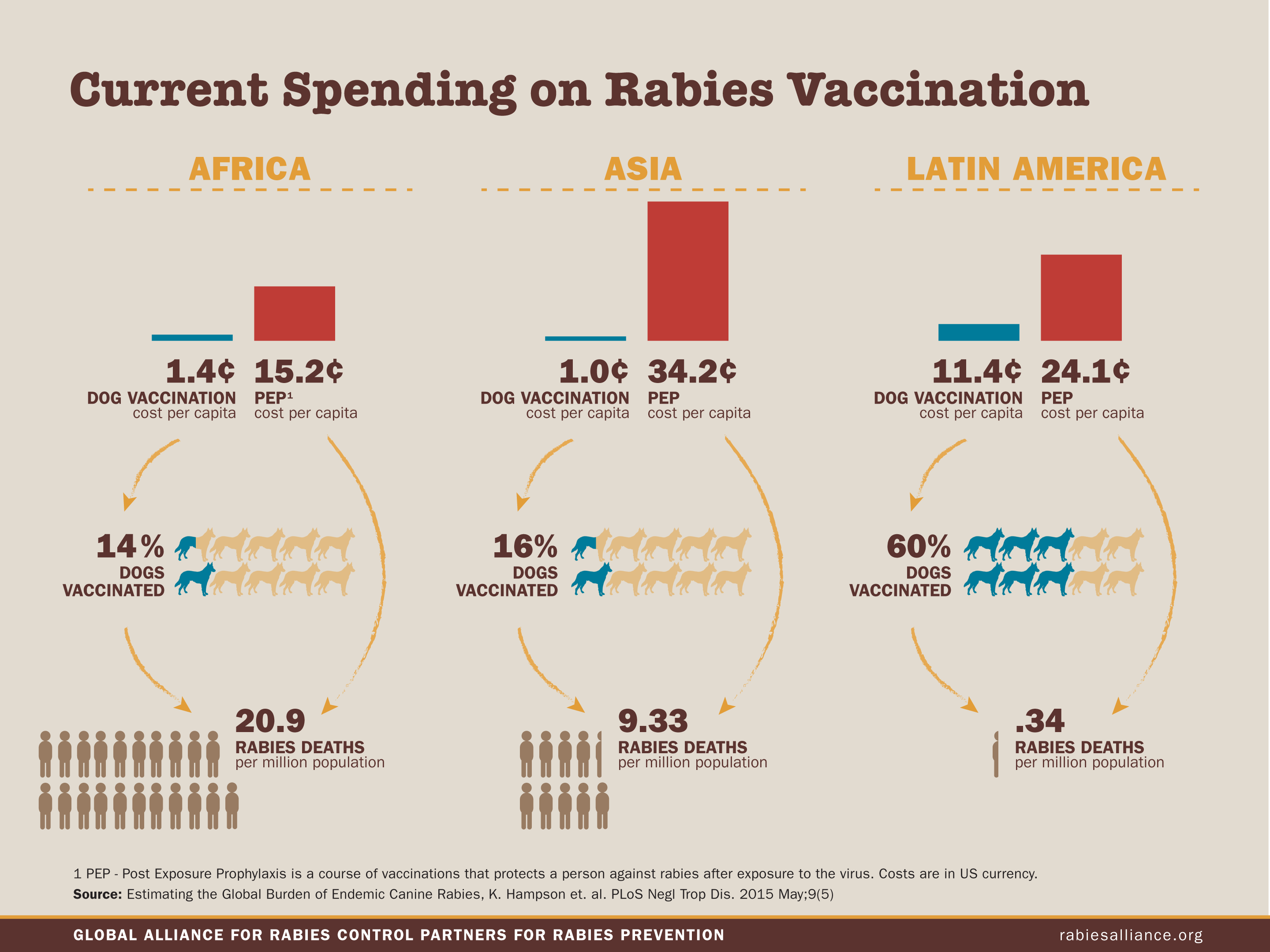Featured Article - 30 October 2015
Spending money on rabies prevention is an investment we can’t afford not to make
National governments should invest in mass vaccination of dogs to prevent rabies. Those are the findings of a new report authored by the World Health Organization (WHO), The Food and Agriculture Organization of the United Nations (FAO) and the World Organisation for Animal Health (OIE) along with the Global Alliance for Rabies Control (GARC).
Spending on cost-effective and sustainable control programmes is an investment, says the study, because it can lead to the global elimination of dog-mediated human rabies, saving thousands of lives every year.

It will also save money. Post-exposure prophylaxis, which is the treatment immediately applied after an animal bite, is costly. It can only protect individuals who have prompt access to health facilities that provide the treatment. By contrast, dog vaccination applied to large populations of dogs in endemic areas can eliminate transmission of the virus completely. Vaccinating 70% of dogs in rabies affected areas is sufficient to eliminate canine rabies worldwide, at a much lower cost than providing post-exposure medication indefinitely.
Rabies continues to kill around 59,000 people every year. The potential return on investment in dog vaccinations is huge.
The Rationale for investing in the global elimination of dog-mediated human rabies (WHO, FAO, OIE, GARC) makes the case that global freedom from dog-transmitted human rabies is feasible. Investment is needed to involve communities and strengthen local initiatives in training people and volunteers to carry out coordinated dog vaccination campaigns to enable geographical and wider dog population coverage in endemic countries.
Investment is also needed to support and sustain control programs at national and regional levels. For example, setting up regional rabies vaccine banks can support countries in their control efforts.
The rationale says that investing in a successful rabies control program means:
-
effective and safe vaccines for dogs and for humans;
-
practical guidance to implement rabies control programs;
-
education and awareness modules for community involvement;
-
data collection, and surveillance and notification systems, which are critical for evaluating the progress of control and elimination campaigns.
Over 98% of human cases of rabies are due to dog bites and, unlike many other diseases, the control methods and vaccines required to tackle this neglected disease are available. Successful pilot programs such as in Kwa Zulu Natal province, South Africa (provincial and national authorities/WHO/Bill and Melinda Gates Foundation) and on Bohol Island, Philippines (provincial and national authorities/GARC/UBS Optimus Foundation) have demonstrated that elimination of canine rabies is achievable through mass dog vaccination campaigns.
WHO, OIE, FAO, supported by GARC will be holding a Conference on the “Global elimination of dog-mediated human rabies: The Time is Now!”, on 10-11 December 2015 at Maison de la Paix in Geneva, that will consider how national governments could invest in prevention and control measures and how the international community can reach a target of 2030 for global elimination of human deaths from dog-transmitted rabies. The Global Alliance for Rabies Control (GARC) is urging countries to develop appropriate investment strategies to eliminate human rabies. The Conference will bring together participants from Ministries of Health and Veterinary Services, national rabies coordinators, veterinary and human health experts, NGOs and the private sector. Together, they can make the case for investment that can result in returns for global health and developing economies.
Publication:
Rationale for investing in the global elimination of dog-mediated human rabies
